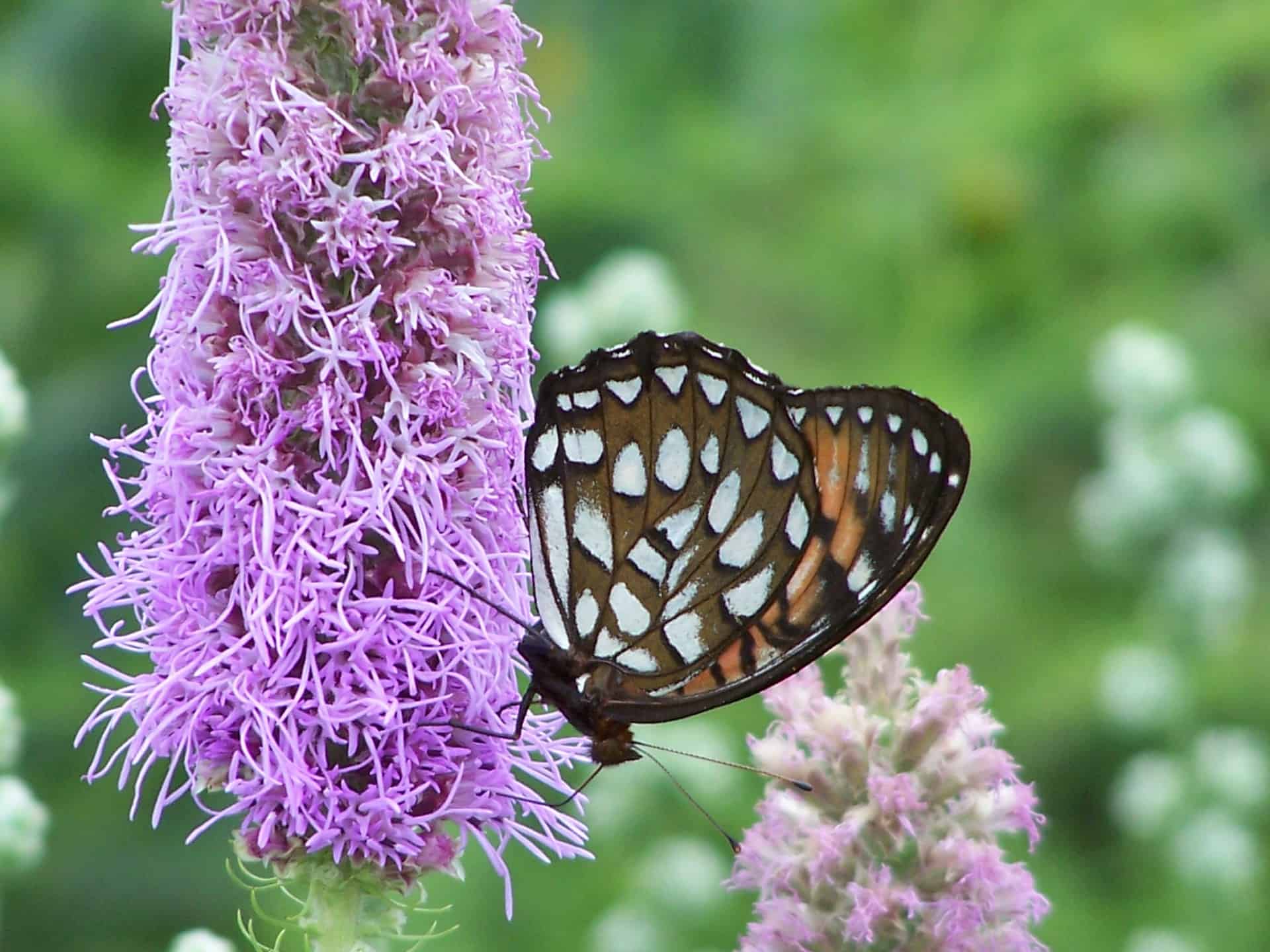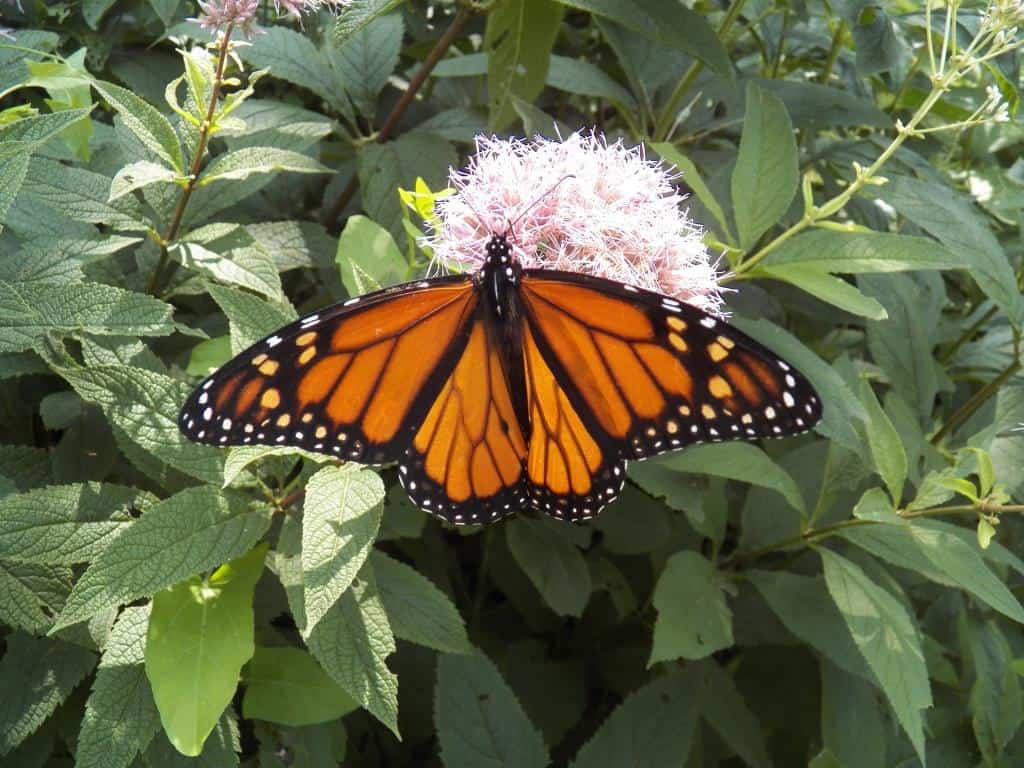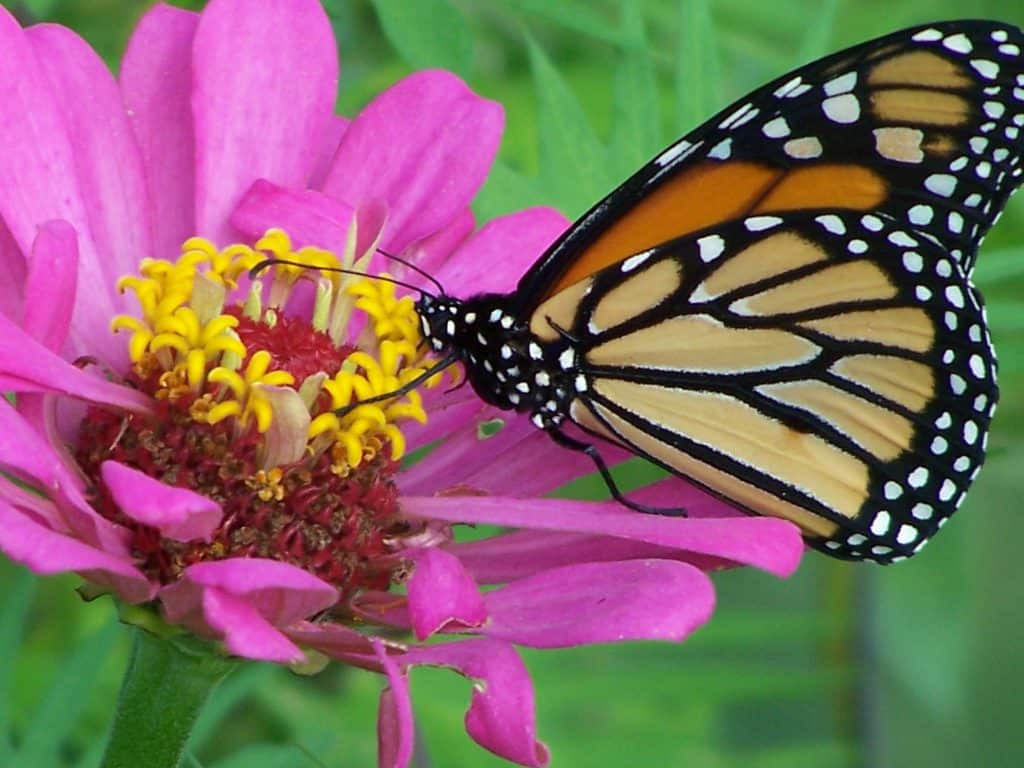Last spring I went to a conference in Lawrence, KS and was inspired by Dr. Chip Taylor of KU’s biology department. In 2005, Dr. Taylor created a program to develop “Monarch Waystations” across the United States. The goal of the program is to educate the public on the importance of butterflies and their habitats, to establish new habitats for Monarchs and other pollinators, and to advance the knowledge of ecosystems in the U.S. I really enjoyed learning about developing a Monarch Waystation, so much in fact I designed and installed one for the Powhattan Volunteer Fire Department. Technically speaking, my yard would qualify as one, but I have not taken time to certify it. This would be a great way to get your kids excited about gardening. My youngest daughter loves watching birds and butterflies and absolutely loves all the flowers in my garden. When I take the time to show her Monarchs and other butterflies, I know we are both getting the best of our world.

I recently read an article put out by the American Horticultural Society about the need for butterfly habitats and the loss of milkweeds due to increased use in herbicides in crop fields. Drifting of glyphosate and 2, 4-D is causing huge losses in milkweeds throughout the Midwest and Great Plains regions. The use of Round-Up Ready corn, soybeans, sugar beets, cotton, and alfalfa are instigating the use of chemicals and the loss of Monarch habitats. Many uninformed county road services are also spraying trees and shrubs in ditches and around bridges, often letting the chemicals drift onto desirable native plants. Last winter’s overwintering population of Monarchs in Mexico was the lowest it has been since monitoring was begun. It was estimated that we need hundreds of thousands of Monarch habitats in people’s yards to make a difference in the population.
 Caterpillar on Marsh Milkweed
Caterpillar on Marsh Milkweed
A Monarch waystation can be anywhere, even on a rooftop! They can be as small as pots on a porch or as large as imaginable. Most that I have seen have been less than 10,000 square feet in size, like the one in the Topeka, KS Zoo. There are different ways to go about creating your own Monarch waystation; you can go to monarchwatch.org and read through the downloadable material on developing one or you can contact us for a design and planning specifics.
 A Monarch resting on Joe Pye Weed.
A Monarch resting on Joe Pye Weed.
To develop a waystation, you need to think about soil, light, and plants. Those are the most important factors. Water is also important, but most of the plants used in waystations are drought tolerant and need little watering after two or three weeks. Soil should be well-drained, with a pH value between 6 and 7.5. In Kansas, we have typically high pH soils already, so amending for pH balance is not necessary. Add organic matter with compost, composted manures, or leaf mold. Your waystation should be located in a spot that receives at least 6 hours of full sun per day. Milkweeds are full sun perennials and require lots of light.
 Sullivant’s milkweed is great habitat for Monarchs
Sullivant’s milkweed is great habitat for Monarchs
Next are plants, the best part of every gardening project! For a certified Monarch waystation, three milkweed species are required. Showy, Marsh, and Butterfly Milkweed are the most commonly grown milkweeds for home landscape use. You may also look for whorled, common, green, and antelopehorn milkweeds to grow in your waystation. You will also need nectar plants for feeding; butterfly bush, buttonbush, arrowwood viburnum, coneflowers, rudbeckia, blazing star, rattlesnake master, Joe Pye weed, ironweed, aster, phlox, and tall sedums are all examples. Annual flowers should also be used for nectar sources; zinnias, Mexican sunflower, tropical milkweed, Brazilian verbena, and pentas are good examples. Be careful not to overuse non-native plants in your waystation as they provide no food for developing caterpillars of butterflies. When developing your plant palette, it is also important to add some native grasses to the mix for overwintering insects. Use little bluestem, prairie dropseed, blue grama, and switchgrass.
 Rudbeckia ‘Henry Eiler’s’ can be used in a Monarch Waystation.
Rudbeckia ‘Henry Eiler’s’ can be used in a Monarch Waystation.
You may also need to add a butterfly bath if there is not a water source nearby. Simply use a bird bath, a large saucer, or a gently sloping bowl and add rocks that rise slightly above the water’s surface, for the butterfly to land on.
 Monarch posing on a zinnia.
Monarch posing on a zinnia.
Pest control is very important in your new waystation. It would be best to add mulch to reduce weeds. Also, pull weeds weekly to prevent a takeover of your new plants. You may see an infestation of aphids on your milkweeds. Most of the time, lady beetles and lacewings will take charge of these pests. If you do need to spray, be sure to apply early in the morning, when beneficials like bees are at a minimum. As you care for your waystation, you can teach your children about butterflies, insects, and flowers. This is an ecosystem that will amaze and delight you for years to come!



